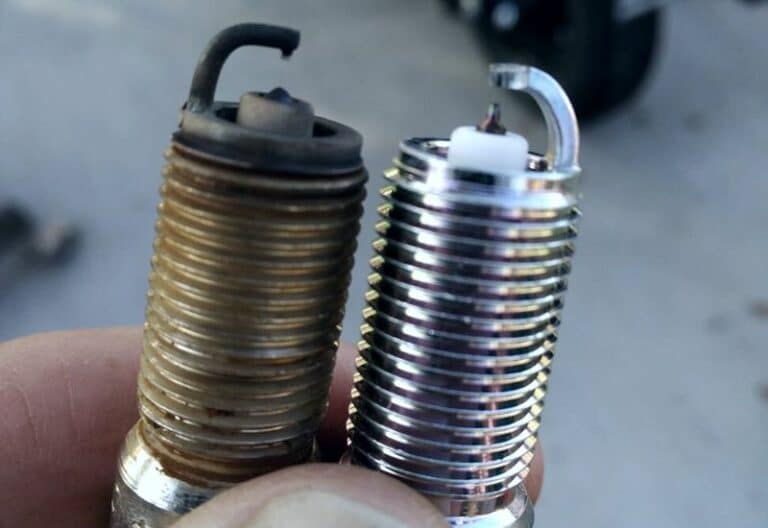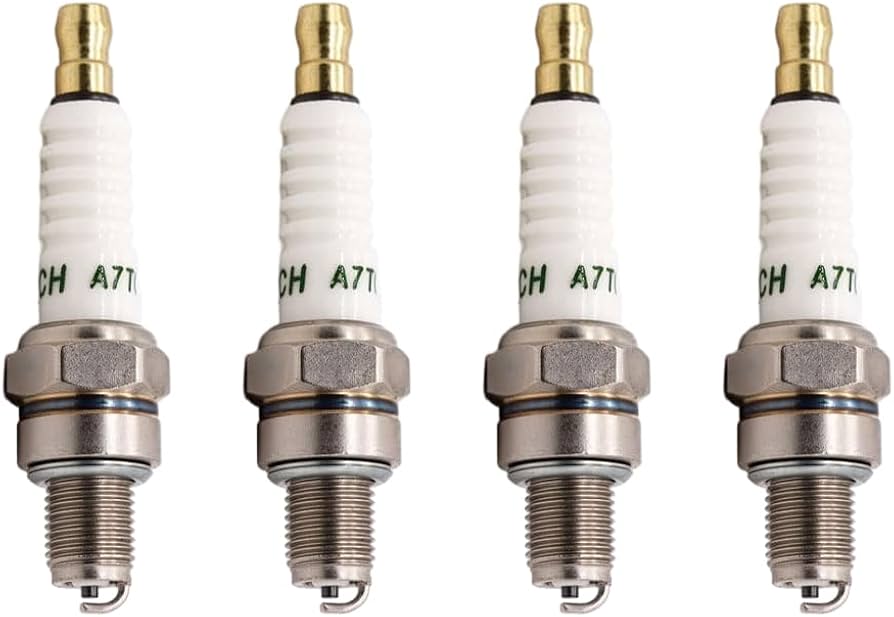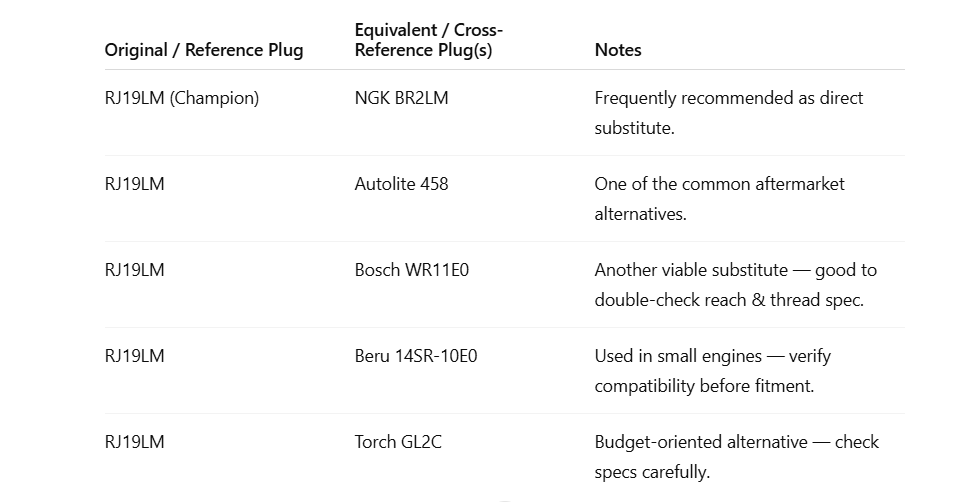Spark plugs are a critical component of your vehicle’s ignition system, and knowing how to tell whether they are old or new is essential for maintaining your engine’s performance. Spark plugs ignite the air-fuel mixture in your engine’s combustion chamber, providing the spark needed to power the vehicle. Over time, they can wear out due to the extreme conditions inside your engine. In this comprehensive guide, we’ll show you how to identify whether your spark plugs are old or new and why it’s crucial for your vehicle’s health.
Having spark plugs that are in good condition is critical for smooth engine operation, fuel efficiency, and overall vehicle performance. When spark plugs start to wear out, they can cause engine misfires, rough idling, and reduced acceleration. Recognizing the signs of old spark plugs and replacing them promptly can prevent further damage to your engine.
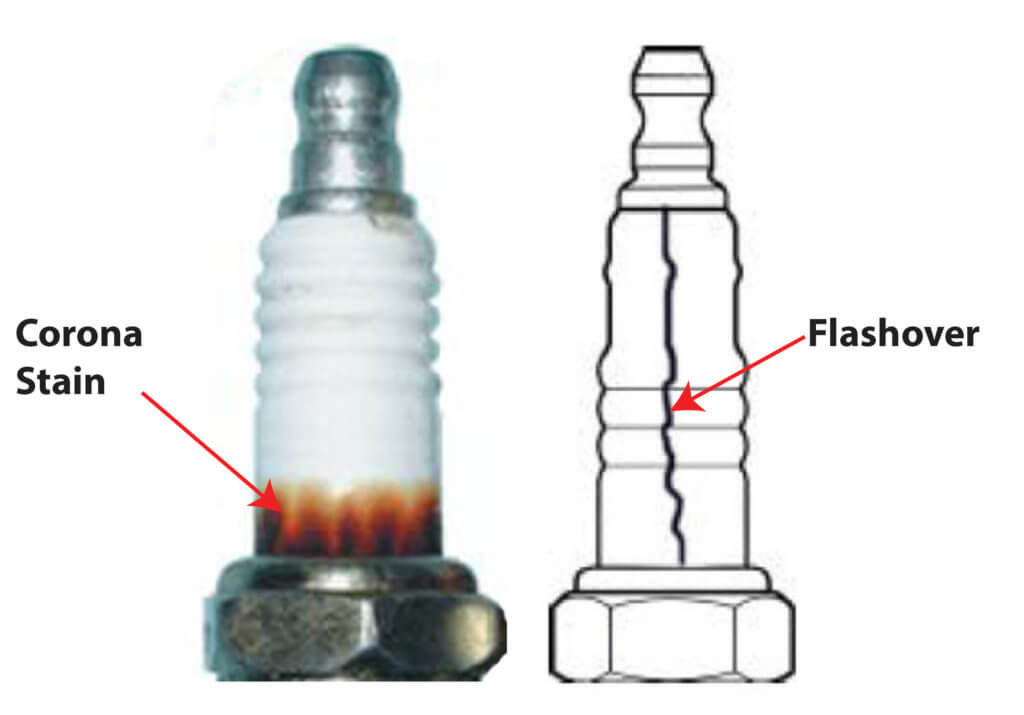
Contents
What Are Spark Plugs and Why Are They Important?
To properly understand how to determine the condition of your spark plugs, it’s essential to know their role in your vehicle’s engine. Spark plugs are small but powerful components that create the spark needed to ignite the air-fuel mixture inside your engine’s combustion chamber. This ignition starts the combustion process, which powers the engine and makes your car move.
How Spark Plugs Work
A spark plug consists of a central electrode, a ground electrode, and an insulator. When electrical current flows from the ignition system to the spark plug, it causes the central electrode to create a spark that ignites the fuel-air mixture in the engine. This process occurs in milliseconds but is crucial for smooth engine performance.
The Impact of Old Spark Plugs
Over time, spark plugs degrade due to high temperatures, pressure, and fuel combustion. Worn spark plugs can fail to create a proper spark, leading to issues such as engine misfires, rough idling, decreased fuel efficiency, and trouble starting the engine. That’s why understanding how to tell if your spark plugs are old or new is vital to keeping your car in top condition.
Signs Your Spark Plugs Are Old
Identifying when your spark plugs are old or worn out is crucial for maintaining your vehicle’s performance. Here are the common signs that indicate your spark plugs need attention.
1. Engine Misfires or Rough Idling
If your engine is misfiring or idling roughly, it could be a sign that your spark plugs are not performing as they should. When spark plugs become worn, they can fail to create a strong enough spark to ignite the air-fuel mixture. This can cause the engine to run unevenly, resulting in poor performance. If you notice your car jerking or sputtering while idling, it’s time to check your spark plugs for wear.
2. Difficulty Starting the Engine
One of the most noticeable signs that the spark plugs may be old is difficulty starting the engine. When spark plugs are worn out, they lose their ability to generate a proper spark, causing the engine to turn over slowly or not start at all. If you have to crank the engine several times before it starts, or it takes longer than usual, the spark plugs may be past their prime.
3. Poor Acceleration
Old or worn-out spark plugs can also cause poor acceleration. If you notice that the car is slow to respond when you press the accelerator, it may be because the spark plugs are struggling to ignite the fuel properly. A delay in acceleration can result in reduced power, causing the vehicle to feel sluggish or unresponsive.
4. Decreased Fuel Efficiency
When spark plugs are not working correctly, the engine may burn more fuel than necessary. This is because the spark plugs fail to create an efficient spark, which leads to incomplete combustion of the fuel. As a result, the vehicle’s fuel efficiency drops, meaning you will have to refuel more frequently. If you notice a sudden decrease in miles per gallon (MPG), it might be time to inspect the spark plugs.
5. Increased Exhaust Emissions
Worn-out spark plugs can lead to incomplete combustion in the engine, which increases the levels of harmful gases in the exhaust system. If you notice black smoke or an unusual smell coming from the exhaust, the spark plugs could be contributing to the problem. Spark plugs that are old or dirty are less efficient at burning fuel, leading to higher emissions and a potential environmental concern.
6. Visible Signs of Wear
In addition to performance issues, one of the best ways to tell if the spark plugs are old is to inspect them visually. To check the spark plugs, you’ll need to remove them from the engine using a spark plug socket and a wrench. Here are some key signs of old spark plugs:
- Carbon Buildup: A thick layer of black carbon deposits is a common sign of a worn-out spark plug. This buildup occurs when the spark plug doesn’t burn the fuel properly, causing it to accumulate on the plug.
- Fouling: Spark plugs can become fouled due to excessive oil or fuel exposure. If the electrodes are coated in oil or fuel residue, they are likely too old and need to be replaced.
- Corrosion and Rust: Prolonged exposure to moisture can lead to rust or corrosion on the spark plug. If you notice any reddish-brown marks or rust on the spark plug, it’s time for a replacement.
- Cracked Insulator: The ceramic insulator surrounding the spark plug can crack over time, especially if the spark plug is exposed to extreme temperatures. A cracked insulator can prevent the spark plug from functioning properly, so it should be replaced immediately.
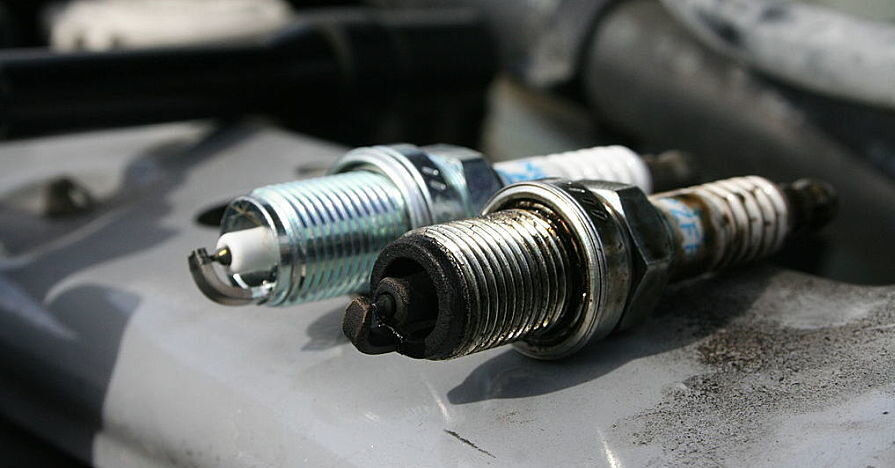
How to Tell If Spark Plugs Are New
While the signs of old spark plugs are relatively easy to identify, new spark plugs will have a fresh, clean appearance and show little to no wear. Here are some signs that the spark plugs are new or in good condition:
1. Clean, Smooth Surface
New spark plugs should have a clean, smooth surface, with no visible damage or carbon buildup. The electrodes should appear intact, and the insulator should be free of cracks or corrosion. When inspecting a new spark plug, the center electrode should be sharp and undamaged, and the ground electrode should be positioned correctly.
2. Proper Spark Plug Gap
New spark plugs come with a precise gap between the center electrode and the ground electrode. You can measure this gap with a feeler gauge to ensure it’s within the manufacturer’s recommended range. A properly gapped spark plug will allow the ignition system to deliver the correct amount of energy to ignite the air/fuel mixture.
3. No Carbon Deposits
New spark plugs should be free of carbon buildup. If the spark plug has been used for some time, it will likely show signs of black carbon deposits. A clean spark plug with minimal deposits indicates that it has not been exposed to poor combustion or inefficient fuel burning.
4. No Visible Damage
The spark plug’s ceramic insulator and metal components should be intact. New spark plugs will not have cracks, chips, or damage to their components. If the spark plug shows signs of wear, it is a sign that it has been in use for some time.
How to Replace Old Spark Plugs
If you’ve determined that your spark plugs are old and need replacing, here’s how to do it:
1. Gather the Necessary Tools
You will need a spark plug socket, ratchet, extension bar, and spark plug gap gauge. You’ll also need the correct replacement spark plugs, which can be found at the local auto parts store.
2. Remove the Old Spark Plugs
To replace the spark plugs, first disconnect the spark plug wires, and then use the spark plug socket and ratchet to carefully remove the old plugs from the engine. Make sure to remove each plug one by one to avoid mixing up the wires.
3. Install the New Spark Plugs
Before installing the new spark plugs, use the gap gauge to check the gap and adjust it if necessary. Then, screw the new spark plugs into place, tightening them by hand before using the ratchet to securely fasten them. Be careful not to over-tighten, as this can cause damage to the spark plug or the engine.
4. Reattach the Spark Plug Wires
Once the new spark plugs are in place, reconnect the spark plug wires, ensuring they are securely attached to each plug. Start the engine to make sure the new plugs are functioning correctly.
Frequently Asked Questions
Here are some FAQs about how to tell my spark plugs is old or new –
Q1: How often should I replace my spark plugs?
Spark plugs should generally be replaced every 30,000 to 100,000 miles, depending on the type and the manufacturer’s recommendations.
Q2: Can I replace the spark plugs myself?
Yes, replacing spark plugs is a straightforward DIY task. With the right tools and some basic knowledge, you can replace spark plugs at home.
Q3: What happens if I don’t replace my spark plugs?
Ignoring old spark plugs can lead to poor engine performance, including misfires, rough idling, reduced fuel efficiency, and difficulty starting the engine.
Q4: How can I extend the life of my spark plugs?
Regular engine maintenance, using high-quality fuel, and keeping the ignition system in good condition can help extend the life of your spark plugs.
Q5: Are spark plugs the same for all vehicles?
No, spark plugs vary depending on the make, model, and engine type of your vehicle. Always refer to your vehicle’s manual to find the correct spark plugs.
Conclusion
Knowing how to tell if the spark plugs are old or new is crucial for keeping the vehicle’s engine in top condition. Regular inspection and timely replacement of spark plugs can prevent performance issues, save fuel, and prolong the life of the engine. By recognizing the signs of old spark plugs and learning how to replace them, you can ensure that the car runs smoothly and efficiently.

